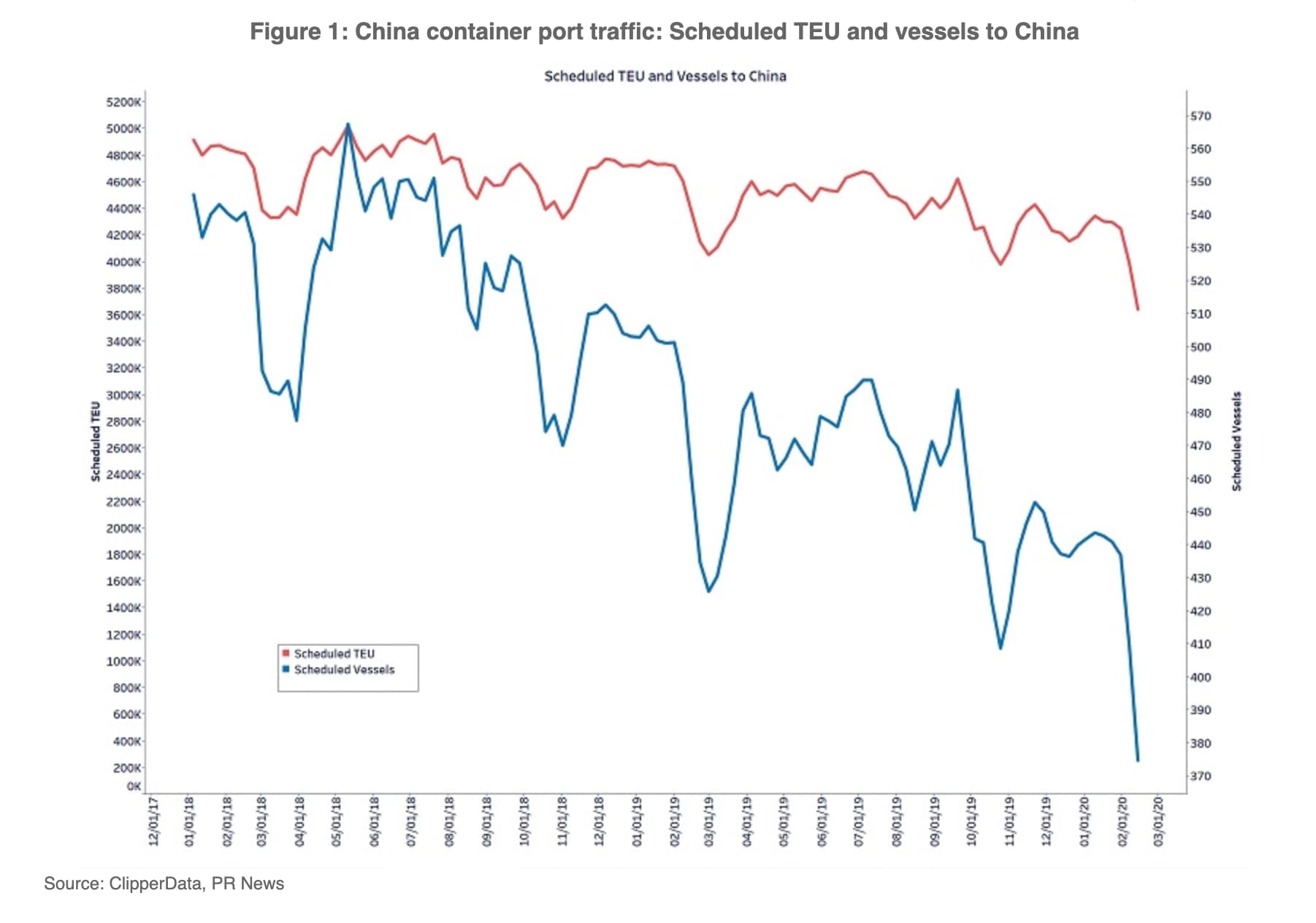August 24, 2022 Maritime Safety News
Lockdowns, stranded containers, ships waiting several weeks for a slot outside the world’s biggest terminals—that’s been the reality of global trade since early 2020.
The pandemic triggered record consumer demand, overwhelming supply chain capacity, creating port congestion and causing a lack of truck drivers and warehouse workers. Supply chain congestion issues and international sanctions have pushed the already disjointed supply chain beyond its limits. As a result, companies across the globe have dealt with delayed goods and empty shelves.
The pandemic created a massive increase in consumer demand for electronics, furniture and building materials, which accelerated our customers’ online presence and need for omnichannel solutions. As a result, more than $38B USD worth of bookings are now placed through the Maersk.com platform, which makes it one of the world’s largest B2B websites. This monumental shift made it apparent that the global supply chain needed to be restructured to streamline the flow of goods to consumers.
That’s why we’ve taken a huge leap in our digital transformation over the last 12 months, putting us well ahead of our planned progress.
Our digital transformation enables us to better serve customers by optimising and integrating their supply chains. It also releases resources in our customers’ supply chain, so they can focus on their business and create greater value for their commercial pipeline and shareholders—instead of spending time on supply chain management.
Today, customers can book a container with a few taps on their smartphone or tablet. This was unheard of a couple of years ago—when confirming an order took several touchpoints via email and phone.
A breakthrough
Covid-19 has also changed the priority of logistics in the business community. Before the pandemic, supply chain management was a question of “just in time,” while stock management evolved around having just enough supplies to match demand. The trend was a cost-cutting manoeuvre, but ultimately made companies vulnerable to the slightest disruptions in their porous supply chains like bad weather, accidents and the pandemic.
Supply chain management has historically been a task shared between procurement, logistics and even finance. Besides an extensive amount of time and lengthy decision-making processes, this also led to a lack of flexibility, agility and manoeuvrability in the supply chain.
The consequences of Covid-19 and other unforeseen events over the past two years have turned the supply chain upside down. Today, security of supply and stock management are amongst the main priorities in executive management and are part of quarterly reporting in most companies. Supply chain strength and confidence shapes earning potential and the response of financial markets.
Even though the business community has embraced supply chain digitisation to a large extent, there’s still a lack of artificial intelligence and data utilisation.
There’s a good reason for that. Operating a manual compounded supply chain makes it almost impossible to collect relevant data, since it’s spread across up to 30 different parties. On top of that, collecting data is an immense task when the ability to make fast decisions is crucial to secure the flow of goods.
At A.P. Moller – Maersk, we collect and receive feedback from more than 100,000 customers which gives us unique insights into their needs and movements of global markets.
We’re investing massively in the development of new digital tools and products that better integrate logistic solutions and makes it easier for our customers to reroute or find alternative means of cargo transportation when supply chain disruptions occur.
The current widespread congestion and lack of capacity has underpinned the need for rethinking and optimising global supply chains. The rise of e-commerce and online shopping, where consumers expect day-to-day delivery, has increased the need for a broader and longer-term relationship between logistic companies and their customers. Consumers have a choice, which means they will shop elsewhere if they don’t have visibility or an ETA when they shop online.
That is why we’re in the middle of a historic breakthrough. One as big as the containerisation of the shipping industry in the 1960s.
Cultural transition
The new reality demands a lot from stakeholders across the industry. It’s no secret that shipping and transportation has long been branded as conservative and analogue. Shipping a container can involve 100 different documents!
Six years ago, A.P. Moller – Maersk embarked on a new journey where we divested our energy companies to focus on becoming the integrator of logistics. The process included rethinking our culture and starting new ways of doing business.
Since 2016, we’ve more than tripled our number of tech employees. Many of them have backgrounds in the start-up community or in some of the world’s largest, most successful tech companies. Back in the day, tech was a support function in Maersk, but today it’s an integrated part of daily business.
The pace of technology is reshaping the world. Every company needs to keep up. Just like our customers, we need to embrace change and digitisation to avoid falling behind. We’re well on our way, but we’ve only just begun the journey. As the world’s leading container and logistics company, we’re creating a global supply chain that operates efficiently at scale and can handle inherent disruptions that will always surface in unexpected ways.
Source: https://www.maersk.com/news/articles/2022/08/22/manual-control-halts-global-supply-chains













